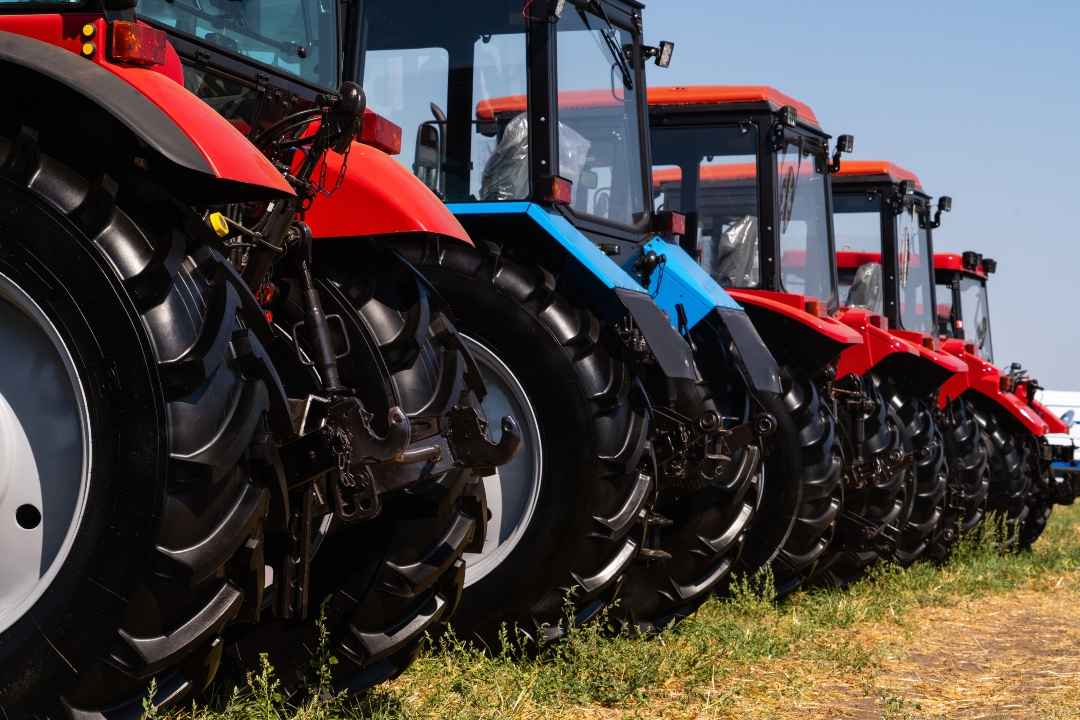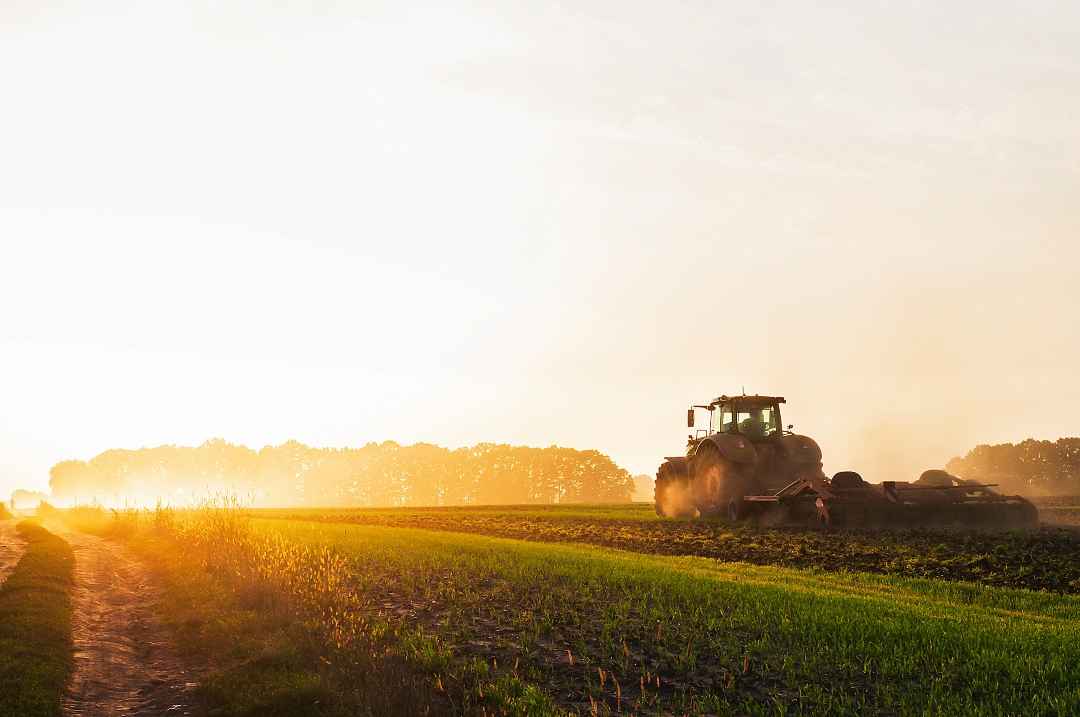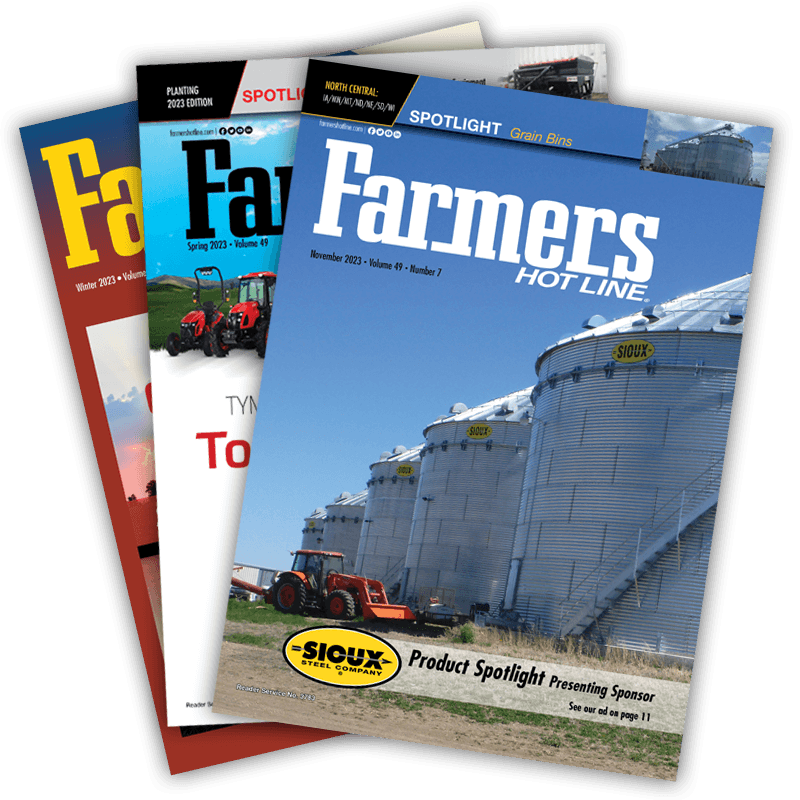Tractors Built to Belong
A Buyer’s Guide for Today’s Acreage
Walk onto any dealer lot in midsummer and you’ll feel it: rows of gleaming tractors lined up like draft horses waiting for their next assignment. Some are compact enough to slip through orchard rows; others look ready to pull a freight train. The choices can be thrilling — and overwhelming.
A tractor isn’t just another purchase, it’s a long-term partner that determines how efficiently you seed, mow, haul and harvest for years to come. Buy too small and you’ll wrestle with underpowered equipment every season. Buy too big and you’ll spend thousands on horsepower you never use, along with the fuel to feed it.
This guide cuts through the shine and spec sheets to help you match a tractor to the realities of your acreage, crop plans and day-to-day tasks. From compact utility models to high-horsepower machines with GPS steering and telematics, we’ll look at what delivers real value — and what just adds cost and complexity.
Begin With the Ground You Farm
Your land — and the jobs you ask of it — should drive every decision. Use these ranges as a starting point:
|
Farm Size |
Recommended Horsepower |
Typical Workload |
|
1 to 5 acres |
20 hp to 25 hp |
Mowing, light loader work, garden tillage |
|
5 to 20 acres |
25 hp to 50 hp |
Loader work, pasture care, small hay operations |
|
20 to 100 acres |
50 hp to100 hp |
Tillage, baling, medium crop production |
|
100-plus acres |
100-plus hp |
Deep tillage, large-planter row crops, heavy hauling |
Numbers such as these aren’t marketing fluff; they translate directly into capability.
A 35-hp compact can run a five-foot rotary cutter and pull a single-bottom plow without strain — perfect for a 10-acre hayfield. Step up to 75-hp and you can handle a 10-foot mower or a square baler turning out 40 to 60 bales an hour. Push beyond what your acreage demands and you’re paying thousands more upfront and burning extra diesel (expect [BOLD] roughly 0.05 gallons of fuel per horsepower per hour:/] under load) for power you may never tap.
Know Your Power — Engine vs. PTO
Horsepower ratings can look straightforward on a spec sheet, but tractors speak two different power languages and understanding both will save you money and frustration.
- Engine Horsepower: is the headline number, the total muscle the engine produces. It tells you how much raw power the tractor can generate before anything is transferred to the drivetrain.
-
Power Take-Off (PTO) Horsepower: PTO is the usable power that actually reaches your implements through the PTO shaft. Because energy is lost to the transmission and hydraulics, PTO horsepower is always lower — typically by 10% to 20%.
Why it matters: Every implement you buy — from a rotary cutter to a baler — will list a minimum PTO requirement, not engine horsepower. A round baler rated for 55 PTO hp usually demands an engine closer to 65 hp to 70 hp to maintain that output once power losses are factored in. Undershoot that number and you risk stalling in heavy windrows, overloading the engine or prematurely wearing clutches and belts.
A quick rule of thumb: Match the implement’s PTO spec and add a 10% to 15% buffer when choosing engine horsepower. That margin keeps you from running the tractor at full throttle all day, improves fuel efficiency and gives you a cushion for future attachments that might draw a little more power than today’s lineup.
What Each Class Really Delivers
Tractor class affects more than raw power — it shapes your implement options, storage needs and operating costs.
-
Compact Utility (20 hp to 50 hp) costs from $18,000 to $35,000 new. These burn 1 to 2 gallons of diesel per hour and fit in a standard barn bay. They are ideal for small-acre vegetable or livestock farms where versatility and maneuverability trump brute strength.
-
Mid-Range Utility (50 hp to 100 hp) can run you from $35,000 to $70,000 and burn 2 to 3 gallons per hour. These power 8-foot tillers, balers and larger loaders are a sweet spot for 20- to 100-acre hay or row-crop farms.
-
High-Horsepower (100-plus HP) are about $70,000 and up and burn 4 to 6 gallons per hour. Built for multi-hundred-acre grain operations and deep tillage. These machines are impressive, but often overkill unless you’re pulling large planters or heavy ripper shanks.
Jumping from 50 hp to 90 hp can add $15,000 to $25,000 to the sticker price and nearly double hourly fuel costs without adding any real efficiency on a mid-size farm.
Features That Pay Their Way
Modern tractors aren’t just steel and diesel. Smart upgrades once reserved for large operations now offer measurable returns even on modest acreage:
-
GPS auto-steer: guides rows with inch-level accuracy and cuts overlap by up to 10%, trimming fuel costs by roughly $200 to $300 per season on a 40-acre farm.
-
Telematics: send maintenance alerts to your phone so you can service hydraulics or filters before a breakdown, avoiding service calls that can run $1,000 or more per day of downtime during planting or harvest.
-
Hydraulic quick-attach systems: let you swap implements in under two minutes instead of 15, saving hours across a busy season.

Transmission: The Unsung Power Player
Horsepower may grab headlines, but the transmission determines how that power actually reaches the ground. Choosing the right system can make everyday tasks easier, safer and more efficient:
-
Hydrostatic: Think of it as an automatic for tractors. Infinite speed variation with no clutch means smooth, clutch-free control that shines in loader work, mowing or chores that demand frequent stop-and-go movement. The trade-off is slightly higher cost and a bit less torque at the top end.
-
Shuttle-Shift / Powershift: These are ideal for steady, heavy pulling. They let you change direction or gears without clutching, keeping torque high for tillage, plowing or long field passes.
-
Traditional Manual: Lowest upfront price and bulletproof durability. Best when you need raw torque and don’t mind working a clutch.
Match the transmission to your daily needs rather than the sales pitch. If half your hours are spent scooping manure or moving hay bales in tight spaces, the ease of a hydrostatic drive can save both time and operator fatigue. If your work leans toward long tillage runs or heavy ground engagement, a powershift or robust manual will put more usable muscle to the dirt.
Serviceability Over Flash
The prettiest tractor in the shed won’t help if it sits idle waiting for parts. Favor models with tool-free engine access, common filter sizes and a dealer within about 30 miles — every extra hour of transport can add hundreds to a repair bill.
Certain brands consistently score high on parts availability and resale value, letting owners recoup 50% to 70% of purchase price after five years if an upgrade is needed, so doing your research is paramount.
Bringing It All Together
When the shopping is done and the paperwork signed, what you’re really bringing home isn’t just horsepower on four wheels. It’s the heartbeat of your fields for the next decade or more. A good tractor turns long days into steady progress: it hauls hay before a storm, keeps a mower humming through the first cut of spring and fires up on a frosty morning when everything else feels frozen.
The smartest choice isn’t the model with the biggest badge or the flashiest tech — it’s the one that matches the rhythm of your ground. Size it to the acres you actually work, give it the power to handle your toughest recurring job and choose additional features that save hours instead of just adding bragging rights.
Pick well and you’ll spend less on fuel, lose fewer days to breakdowns and gain a machine that simply shows up, season after season, ready to work as hard as you do. That’s the tractor worth owning — the one that fits your land like a trusted pair of boots and carries your farm quietly, reliably into the years ahead.


